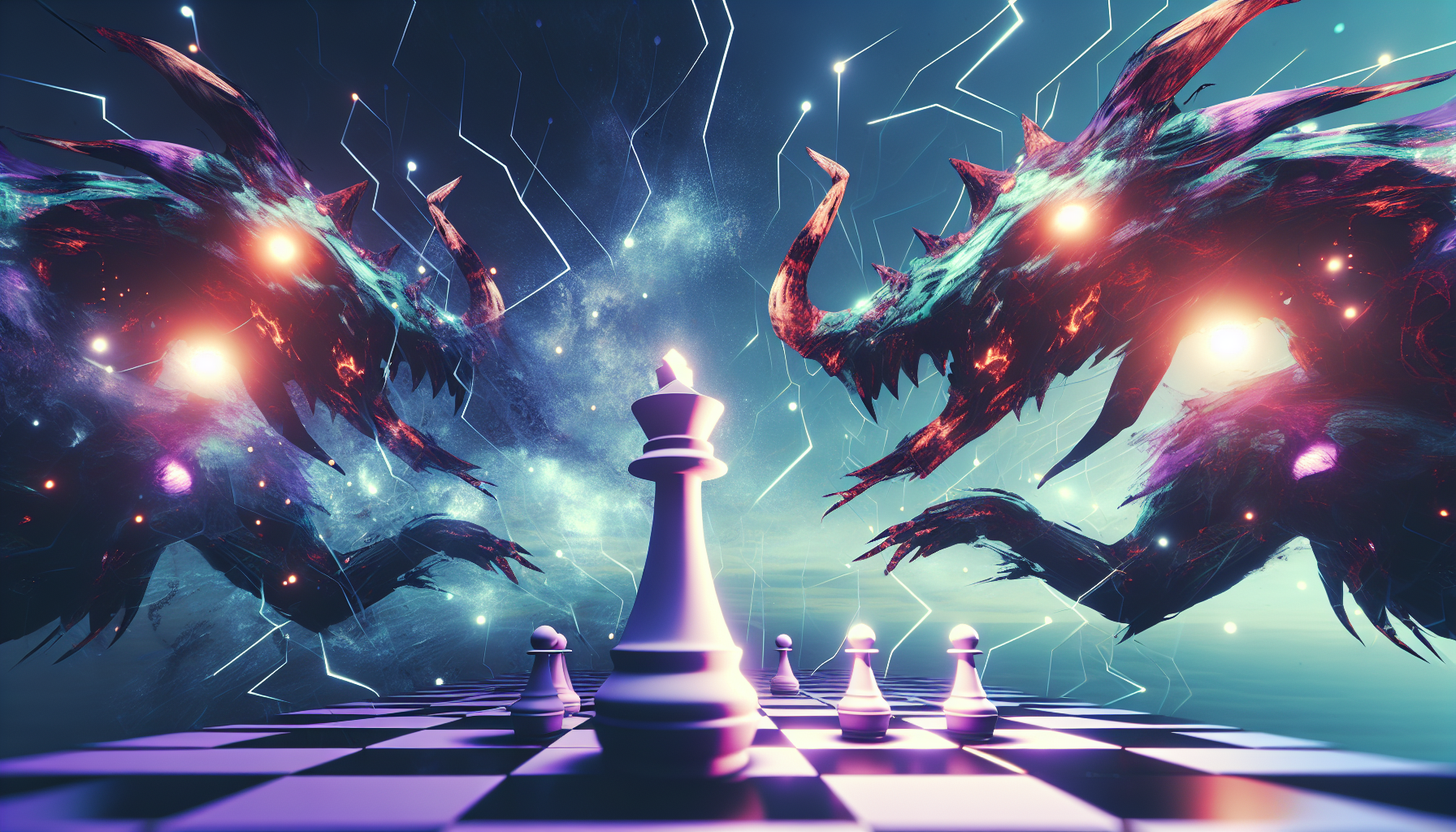Elden Ring’s vast, intricate world is built not just through its breathtaking vistas and cryptic lore, but also through its towering, unforgettable bosses. Each encounter is a rite of passage—a test of skill, adaptability, and sheer willpower. These battles are not merely hurdles, but towering figures woven into the narrative, embodying the shattered order of the Lands Between. Whether you’re lured by the promise of legendary loot, the thrill of overcoming impossible odds, or the satisfaction of piecing together a fragmented story, mastering Elden Ring’s main bosses is essential for any would-be Elden Lord.
The Nature of Bosses in Elden Ring
Elden Ring distinguishes between three primary types of bosses: Main Bosses, which are directly tied to the game’s critical path and must be defeated to progress the story; Optional Bosses, which offer unique rewards and lore but are not required for completion; and Field Bosses, mini-bosses that roam the open world or guard significant treasures. For this guide, we focus only on the main bosses—the pivotal encounters that shape your journey to become Elden Lord.
List of Main Bosses in Order of Encounter
Below, we present every main story boss in the order most players will encounter them. However, it’s important to note that Elden Ring’s open design means you can tackle some areas in a different sequence. The progression below represents the canonical path, but flexibility is one of the game’s greatest strengths.
- Margit, the Fell Omen – The first true test of mettle, guarding the entrance to Stormveil Castle and the path to Godrick.
- Godrick the Grafted – The first of the demigods, ruler of Stormveil Castle and wielder of a grotesque amalgamation of limbs.
- Red Wolf of Radagon – A swift and deadly guardian enforcing the will of the Greater Will in Raya Lucaria Academy.
- Rennala, Queen of the Full Moon – A sorcerous demigod whose fate is entwined with rebirth and the stars.
- Godfrey, First Elden Lord (Golden Shade) – A spectral echo of the man who once ruled the Lands Between, now returned to challenge you in the Royal Capital.
- Morgott, the Omen King – The true, concealed king of Leyndell, and a distorted reflection of Margit.
- Fire Giant – A colossal remnant of an ancient race, tasked with guarding the flame that could burn the Erdtree.
- Godskin Duo – A formidable pair representing the Godskin Apostles, a recurring and challenging faction throughout the game.
- Maliketh, the Black Blade – Once known as Gurranq, this fearsome guardian wields the power of Destined Death.
- Sir Gideon Ofnir, the All-Knowing – A scholar who seeks to rewrite history, now standing as the final human barrier before the Erdtree.
- Godfrey, First Elden Lord / Hoarah Loux, Warrior – The returning warrior, now stripped of his regal title but even more dangerous.
- Radagon of the Golden Order – The enigmatic patriarch of the Shattering and a living embodiment of the Elden Ring.
- Elden Beast – A cosmic entity manifesting as the true final boss, the vessel and essence of the Elden Ring itself.
Detailed Boss Breakdown
Margit, the Fell Omen
Serving as the game’s first major skill check, Margit is a relentless, unpredictable swordsman who punishes overconfidence and hesitation. Players must master timing, dodging, and openings—lessons that will be invaluable for the rest of the journey.
Godrick the Grafted
Godrick’s arena is a stage for grotesque transformation, as he severs his own limbs in favor of grafting the bodies of others onto himself. His sweeping, unpredictable attacks require players to adapt quickly, and his second phase introduces elemental hazards.
Red Wolf of Radagon
This nimble, magical wolf is a relentless pursuer, darting through the halls of Raya Lucaria. While less intimidating than other bosses, his speed and spellcasting can quickly overwhelm unprepared Tarnished.
Rennala, Queen of the Full Moon
Rennala’s fight is divided into two phases: a surreal, illusionary battle against her magical constructs, followed by a direct confrontation with her moon sorcery. This fight emphasizes patience and pattern recognition.
Godfrey, First Elden Lord (Golden Shade)
This golden specter is a master of wide, sweeping attacks and punishing grabs. Although a shade of his former self, he remains a formidable opponent, demanding respect for his timing and reach.
Morgott, the Omen King
Morgott is the true form of Margit, the Fell Omen, finally revealed as the ruler of Leyndell. His move set is familiar but expanded and more aggressive, culminating in spectacular holy and physical attacks.
Fire Giant
One of the game’s most visually impressive battles, the Fire Giant is a test of endurance and spatial awareness. His arena is vast, his attacks devastating, and his second phase dramatically changes the battlefield.
Godskin Duo
This duo fight is one of Elden Ring’s most contentious, pitting players against two adaptive bosses at once. Success requires careful use of crowd control, spacing, and awareness of both Godskin types’ unique abilities.
Maliketh, the Black Blade
Maliketh is swift, relentless, and inflicts health-draining damage with his black blade. His first phase as Gurranq is manageable, but as Maliketh, his aggression and mobility are unparalleled.
Sir Gideon Ofnir, the All-Knowing
As the Last Tarnished standing between you and the Erdtree, Gideon is a spellcaster with access to nearly every school of magic. His battle is a frenetic display of sorceries and incantations, demanding quick reflexes.
Godfrey, First Elden Lord / Hoarah Loux, Warrior
Shedding his regal guise, Godfrey becomes Hoarah Loux, a primal warrior. The fight escalates into a brutal wrestling match, with earthquakes, grabs, and unrelenting combos.
Radagon of the Golden Order
Radagon is the last barrier before the Elden Beast, a master of holy and physical attacks. His moves are telegraphed but punishing, and his presence is deeply entwined with the game’s lore.
Elden Beast
A cosmic, ethereal entity, the Elden Beast embodies the game’s themes of cosmic horror and rebirth. This battle is as much a war against the environment—its arena shifts and morphs—as it is against the beast itself.
Progression Path and Great Runes
To reach the final confrontation with the Elden Beast, players need only two Great Runes—typically those of Godrick and Morgott. These “shardbearers” are demigods whose deaths unlock the path to Leyndell and beyond. While defeating all demigods is not strictly necessary, each one’s defeat grants greater power, new endings, and deeper insight into the world’s lore.
The canonical path leads from Limgrave through Liurnia of the Lakes, then up to the Altus Plateau, the Mountaintops of the Giants, and finally into Crumbling Farum Azula before returning to the ashen remains of Leyndell. This route is suggested for its narrative coherence and pacing, but Elden Ring’s non-linear structure allows for creative and variable boss orders.
Optional and DLC Bosses
Elden Ring’s main story bosses are the tip of the iceberg. Numerous optional and DLC bosses—such as Bayle the Dread in the Shadow of the Erdtree expansion—offer even greater challenge and reward for those seeking to uncover every secret. These encounters are not required for the base game’s conclusion but are essential for players who wish to experience the full breadth of Elden Ring’s design and lore.
Combat Strategy for Main Bosses
- Study Patterns: Each boss has unique tells for their attacks. Learning these is crucial for dodging and countering.
- Experiment with Builds: Melee, magic, and ranged strategies each have strengths and weaknesses against different bosses.
- Level Appropriately: Grinding for runes to level up your character or weapons can make a significant difference.
- Use Summons: Spirit ashes and in-game allies can provide breathing room or even turn the tide in tough battles.
- Adapt: No single strategy works for every boss. Be prepared to change tactics, weapons, or even spells mid-battle.
Main Boss List in Table Format
| Boss Name | Location | Recommended Level |
|---|---|---|
| Margit, the Fell Omen | Stormveil Castle | 25 |
| Godrick the Grafted | Stormveil Castle | 30 |
| Red Wolf of Radagon | Raya Lucaria Academy | 40 |
| Rennala, Queen of the Full Moon | Raya Lucaria Academy | 40 |
| Godfrey, First Elden Lord (Golden Shade) | Leyndell, Royal Capital | 55 |
| Morgott, the Omen King | Leyndell, Royal Capital | 60 |
| Fire Giant | Mountaintops of the Giants | 75 |
| Godskin Duo | Crumbling Farum Azula | 85 |
| Maliketh, the Black Blade | Crumbling Farum Azula | 90 |
| Sir Gideon Ofnir, the All-Knowing | Leyndell, Ashen Capital | 90 |
| Godfrey, First Elden Lord / Hoarah Loux, Warrior | Leyndell, Ashen Capital | 90 |
| Radagon of the Golden Order | Erdtree Throne | 90+ |
| Elden Beast | Erdtree Throne | 90+ |
Conclusion
Elden Ring’s main bosses are more than just obstacles—they are the pillars of the Lands Between, each a legend in their own right. Their battles are the crucible in which legends are forged, forcing players to grow, adapt, and ultimately, triumph. Whether you seek the path of least resistance or the glory of a full conquest, mastering these fights is a rite of passage for every Tarnished. The road to becoming Elden Lord is fraught with peril, but overcoming these challenges is the true mark of a champion.













